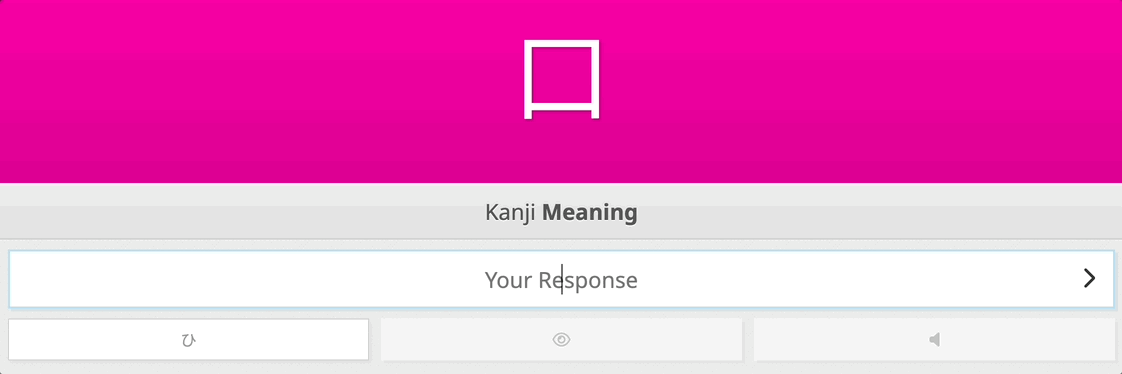Readings vs Meanings
You’ve gotten through the first batch of radicals and unlocked your first kanji. Congratulations!
Kanji and vocabulary work a little bit differently than radicals. For starters, they have two parts to them: Readings and Meanings.
The Reading is the Japanese pronunciation of the kanji or vocabulary word.
The Meaning is the English definition of the kanji or vocabulary word.
During your reviews, WaniKani will ask you to provide the readings and meanings for kanji and vocabulary separately. That means you need to be able to type, spell, and understand kanji and vocabulary words.
If you aren’t sure if WaniKani is asking for a Reading or a Meaning, there are quite a few ways to figure it out:
Kanji Reading

- A black background
- The word “Reading”
- “答え” in the text bar
- Automatically types in Japanese
Kanji Meaning

- A white background
- The word “Meaning”
- “Your Response” in the text bar
- Automatically types in English
Another hint to help you out: If we’re asking for the Reading for the kanji 口, and you try to type the answer “mouth” and it looks like “もう th” you’ll know it’s the wrong one!

Likewise, if you start to type “こう” and end up looking at “kou” you need to look again!

If you’re still having trouble figuring out what WaniKani wants, slow down! It will take a couple hours, maybe even a few days to get used to this system. Once you get used to it, though, your brain will be able to recognize what’s being asked for, and you won’t have to actively think about it ever again!
Of course, you’ll still need to know what to type, so make sure you’ve brushed up on how to type in Japanese.